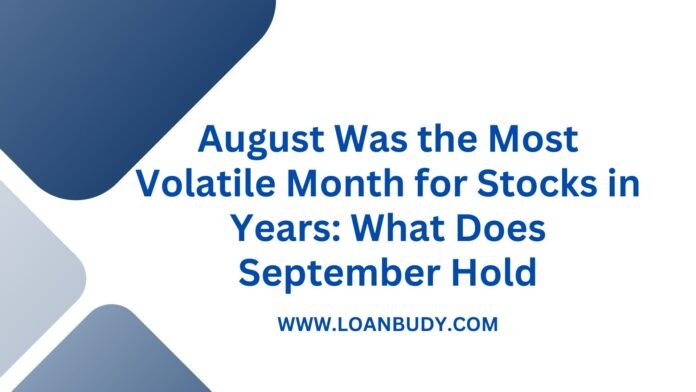August 2023 marked an unprecedented level of volatility in the stocks market, leaving investors and analysts alike pondering what September may bring. With significant fluctuations driven by economic data, geopolitical tensions, and shifting investor sentiment, understanding the factors that contributed to August’s volatility is crucial for anticipating the market’s trajectory in September. Let’s dive into the key elements that defined August and what to expect moving forward.
Key Factors Behind August’s Volatility
- Economic Data Releases:
- August saw the release of several critical economic indicators, including employment reports, inflation data, and consumer confidence surveys. Mixed signals from these reports created uncertainty among investors, leading to erratic trading patterns.
- Federal Reserve Signals:
- The Federal Reserve’s stance on interest rates continued to dominate headlines. Speculation regarding future rate hikes or pauses fueled market reactions, contributing to swings in stock prices as investors reacted to each new piece of information.
- Geopolitical Tensions:
- Heightened geopolitical tensions, including ongoing conflicts and trade negotiations, added another layer of uncertainty. Investors often respond to such news with volatility, seeking to mitigate risk in uncertain environments.
- Earnings Reports:
- Many companies reported their earnings in August, and the results were mixed. Disappointing forecasts from some major corporations led to sell-offs, while positive surprises from others provided temporary relief.
What to Expect in September
As we move into September, several factors will likely influence the stock market’s behavior:
- Continued Economic Data Releases:
- September is set to bring additional economic reports that will be closely monitored. Job growth, inflation, and consumer spending data could either calm or further stir market volatility.
- Federal Reserve Meetings:
- The Federal Reserve’s upcoming meetings will be pivotal. Investors will be keenly watching for any indications of changes to monetary policy. A hawkish or dovish tone from the Fed could significantly impact market sentiment.
- Seasonal Trends:
- Historically, September has been a month of volatility in the stock market. Investors may be wary, as many market corrections have occurred in this month. This historical context could lead to cautious trading as investors prepare for potential downturns.
- Global Market Influence:
- International events, including developments in Europe and Asia, will also play a role. Economic conditions in major markets can ripple through to U.S. stocks, influencing investor confidence.
- Investor Sentiment:
- With the volatility of August fresh in their minds, investor sentiment will be a significant driver of market behavior. Fear and caution could lead to continued fluctuations as traders react to news and shifts in the economic landscape.
Conclusion
August’s volatility has set the stage for an intriguing September in the stock market. As economic indicators roll in and the Federal Reserve communicates its intentions, investors must stay informed and vigilant. While uncertainty remains, strategic planning and awareness of market trends can help navigate the potential ups and downs. As always, it’s essential for investors to align their strategies with their risk tolerance and long-term goals.
Read More:
- 5 Insurance Policies Everyone Should Have for Financial Security
- Tick Size: Definition in Trading, Requirements, and Examples
- Stock Market: 5 Things to Know Before the Stock Market Opens












